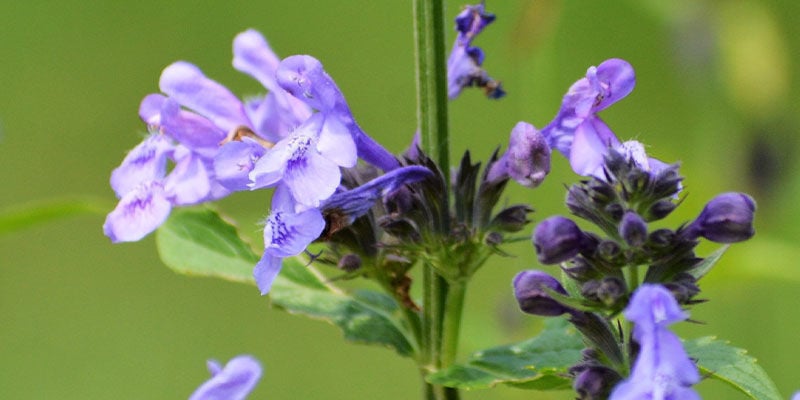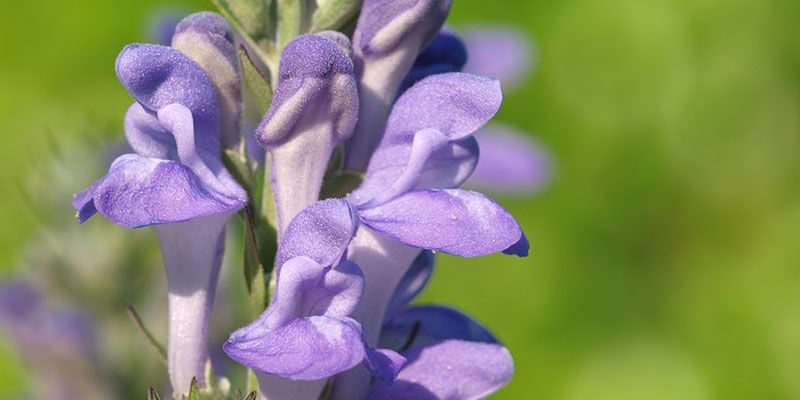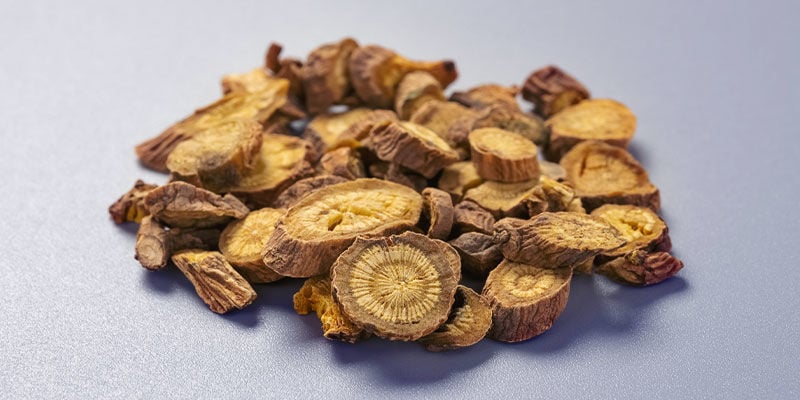-
Seedshop
-
Feminized
Cannabis seeds -
Autoflowering
Cannabis Seeds -
Regular
Cannabis Seeds -
F1 Hybrid
Cannabis Seeds -
CBD
Cannabis Seeds -
Zamnesia
Cannabis Seeds
-
Top 10’s
- Top 10 Feminized Seeds
- Top 10 Autoflowering Seeds
- Top 10 Regular Seeds
- Top 10 USA Cannabis Strains
-
Favourites
- Beginner Strains
- Below 1% THC
- Classic Cannabis Strains
- Cup Winners
- F1 Hybrids
- Fast Flowering Seeds
- High CBD Strains
- High THC Strains
- Mix Packs
- Zamnesia Exclusive Collabs
-
-
Headshop
-
Vaporshop
- Spare Parts & Accessories
- AirVape XS GO (2021)
- Arizer Air MAX
- Arizer Extreme Q
- Arizer Solo 2
- Arizer V-Tower
- Arizer XQ2
- Boundless CFC 2.0 Vaporizer
- Boundless CFX
- Boundless TERA (V3)
- CRAFTY+
- DaVinci IQC
- Dr. Dabber Boost EVO
- DynaVap VapCap "M" PLUS 2023
- DynaVap VonG (i) Titanium
- Flowermate Aura
- Flowermate Cap Pro
- Flowermate Slick
- Flowermate V5.0S Pro
-
Healthshop
-
Smartshop
-
Shroomshop
-
Growshop
-
Seedshop
All CategoriesSeedshop
- Autoflower Seeds
- Feminized Cannabis Seeds
- Zamnesia Seeds
- Zamnesia's Top 10
- CBD Seeds
- F1 Hybrids
- Seed Banks
- Mix Packs
-
Popular Strain Types
- Zamnesia Exclusive Collabs
- Classic Cannabis Strains
- Amnesia Seeds
- Haze Seeds
- Skunk Seeds
- Kush Seeds
- Purple Seeds
- Blueberry Seeds
- Cheese Seeds
- Diesel Seeds
- White Widow Seeds
- Gorilla Seeds
- Northern Lights Seeds
- Granddaddy Purple Seeds
- OG Kush Seeds
- Blue Dream Seeds
- Lemon Haze Seeds
- Bruce Banner Seeds
- Gelato Seeds
- Sour Diesel Seeds
- Jack Herer Seeds
- Girl Scout Cookies Seeds (GSC)
- Wedding Cake Seeds
- Zkittlez Seeds
- Pineapple Express Seeds
- Chemdawg Seeds
- Hindu Kush Seeds
- Mimosa Seeds
- F1 Hybrids
- Mix Packs
- Cup Winners
- Beginner Strains
- High THC Strains
- Fast Flowering Seeds
- Regular Cannabis Seeds
- USA Cannabis Strains
- Cup Winners
- Seedfinder
-
Vaporshop
All CategoriesVaporshop
- Top 10 Vaporizers
- Spare Parts & Accessories
- AirVape XS GO (2021)
- Arizer Air MAX
- Arizer Extreme Q
- Arizer Solo 2
- Arizer V-Tower
- Arizer XQ2
- Boundless CFC 2.0 Vaporizer
- Boundless CFX
- Boundless TERA (V3)
- CRAFTY+
- DaVinci IQC
- Dr. Dabber Boost EVO
- DynaVap VapCap "M" PLUS 2023
- DynaVap VonG (i) Titanium
- Flowermate Aura
- Flowermate Cap Pro
- Flowermate Slick
- Flowermate V5.0S Pro
- G Pen Elite II
- G Pen Micro+
- G Pen Roam
- Hyer Big-E Rig
- MIGHTY+
- PAX Mini
- PAX Plus
- PLENTY
- Puffco Peak Smart Rig
- Puffco Plus
- Storm Vaporizer
- The Proxy (Puffco)
- VOLCANO CLASSIC
- VOLCANO HYBRID
- Vapman 2.0
- Vapman Click
-
Smartshop
All CategoriesSmartshop
- Top 10 Smartshop
- Zamnesia Gift Cards
- After Party
- Aphrodisiacs
- Aromatherapy
- Blue Lotus
- CBD Vape Juice
- Capsule Machines
- Crystals, Gemstones & Minerals
- Dream Herbs
- Drug Tests
- Extracts
- Happy Caps
- Herbal Tea
- Herbs & Seeds
- Incense
- Kanna
- Kratom
- LSA Seeds
- Mescaline Cacti
- Microdosing
- Nootropics
- Relaxing
- Salvia divinorum
- Smart Seeds
- Stimulants
- Supplements
- Tinctures
- Vape Herbs
-
TRIBE
All CategoriesTRIBE
- My Membership
- Spend Gift Points
- TRIBE Sale
- Exclusive products
- Earn Extra Gift Points
-
TRIBE
- Early Access
- Refer a Friend
- Information
-
TRIBE
-
Language
 United States
United States
Monday, 29 December and Friday, 02 January 2026*
Skullcap: Everything You Need To Know
Otherwise known as Scutellaria baicalensis, skullcap is a herb whose use dates back to ancient China. But does it still have a place in today's world? With a bevy of possible benefits in tow, we explain everything you need to know about skullcap, including its history, how to grow it, and where you can purchase it.
Skullcap (Scutellaria lateriflora) is a flowering plant in the mint family. The herb has been used for centuries as a natural mood-booster, and for a variety of other purposes.
What is skullcap?
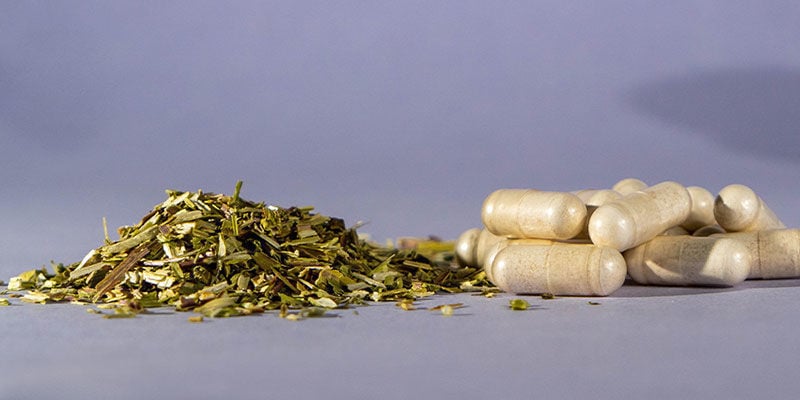
Skullcap is a hardy perennial flowering plant with a lot of uses. The name of the plant comes from the Latin word "scutella", which means “little dish”, in reference to the plant’s small flowers that look like helmets with the visor raised.
Skullcap grows natively in North America, but variations of the plant can be found throughout Europe and Asia. Various parts of the plant, including the roots and leaves, have been used in traditional Chinese and Native American practices for centuries. The plant has a soothing and mood-enhancing effect and can provide a mild “high” when consumed.
Different types of skullcap
There are several slightly different types of skullcap, which all belong to the Scutellaria genus. The most common types used in herbalism are the American and Chinese skullcap varieties.
American skullcap (Scutellaria lateriflora) is native to North America. When the plant goes into bloom, it shows off many small, tubular blue flowers. Some varieties can also display different colours. Among Native Americans, the plant has played an important role in traditional herbal applications.
Chinese skullcap (Scutellaria baicalensis) can be found in several Asian countries and in Russia. Since ancient times, the plant's roots have been used in China to make a preparation known as huang qin. It is most often used in combination with other plants or foods.
Botany of skullcap
Skullcap, along with basil, mint, rosemary, sage, marjoram, oregano, and other widely known culinary herbs, belongs to a family of flowering plants in the mint family known as Lamiaceae. It is a hardy perennial that is normally found growing in damp habitats such as marshes and meadows.
The plant grows to a height of 60–80cm and produces small blue or purple flowers just under 1cm in length. Unlike some other flowering plants, skullcap's flowers do not grow on top of the stem but instead along the length of the plant’s side branches.
Main active compounds in skullcap:
- Flavonoids including scutellarin and wogonin
- Bitter iridoids, mainly catalpol
- Tannins
- Volatile oils
Several flavonoids have been identified as the major active components in skullcap: scutellarin, wogonin, baicalein, and baicalin. It also contains bitter iridoids including catalpol as well as tannins and volatile oils. Each of these compounds is known to exert specific physiological effects depending on dosage.
How to grow skullcap
Skullcap prefers partial shade to full sun and is suitable for hardiness zones 4–8 (USDA scale). Seeds usually have good germination rates but can do even better with a short period of stratification in the refrigerator for a week. Plant seeds flat about 0.5cm deep and set outside once the first true leaves develop.
When planting directly outdoors, place seeds 30cm apart in well-draining, fertile soil. Water moderately. Seeds will germinate after 7–14 days. Skullcap is ready to harvest after about 120 days.
You can harvest skullcap when the flowers are in full bloom. Use scissors and cut the flowers and leaves. Make sure to leave around 8cm of growth when harvesting. Being perennial plants, skullcap can live for several years.
Historical use of skullcap
For thousands of years, skullcap has been used in traditional Chinese practices to make a tonic known as huang qin. Dried skullcap root is either boiled in water or extracted into alcohol to create huang qin. The tonic was first mentioned as a beneficial preparation in the Shuowen Jiezi, an early 2nd-century Chinese dictionary from the Han Dynasty.
Skullcap was also well-known among Native Americans. Healers of the Cherokee and other Native American tribes used the plant mostly as an herb to help with mood swings during menstruation.
What are the potential benefits of using skullcap?

While we've hinted at a few of skullcap’s uses, what are some of its potential benefits? You might be surprised to learn that the herb is being researched for a wealth of possible effects on well-being.
Mood
To start, skullcap is being studied for its impact on mood. A 2013 trial (Brock et al.) saw 43 “relatively non-anxious” participants given 1050mg of skullcap or placebo daily for a two-week period. During this time, it was noted that the participants given the skullcap displayed a significant decrease in “total mood disturbance” compared to placebo, according to the Profile of Mood States (POMS) test. Although a small study, the results are certainly encouraging concerning the interaction between skullcap and mood.
Inflammation
Both American and Chinese skullcap contain large amounts of antioxidants that may impact the immune system and its functions. Research undertaken on animals has begun to explore the effects of skullcap on inflammatory ailments such as allergic rhinitis (Kim et al., 2018).
Sleep
Skullcap also displays the potential to promote sleep readiness through its impact as a soothing and relaxing herbal supplement. Skullcap extracts tend to contain large quantities of flavonoids such as scutellarin and baicalin, both of which are being researched for their effects on the sleep-wake cycle and sleep conditions (Chang et al., 2011).
Bacteria and viruses
Research has also found skullcap to exhibit some antibacterial and antiviral effects. One such study tested a skullcap extract against Acinetobacter baumannii (XDRAB), a type of bacteria linked to the cause of pneumonia in hospital patients. The results show that, out of around 30 different herbs, only skullcap displayed 100% antibacterial effectiveness against XDRAB (Tsai et al., 2018).
Of course, formal studies into the benefits of skullcap are still in their infancy, and much more research is required before any concrete evidence can be provided. However, preliminary results from the abovementioned studies, and others, are definitely a step in the right direction.
Are there any side effects associated with skullcap?

While it's generally understood that skullcap is safe to consume, there are some side effects to consider. Most of these are rare, mild, and not life-threatening. However, if you have any concerns about skullcap, you should consult a medical professional before administering it. Also, pregnant and breastfeeding women should avoid taking skullcap.
Some side effects of skullcap include:
- Nausea
- Stomach ache
- Loss of appetite
- Drowsiness
- Fever
In the most extreme cases, skullcap can cause other side effects, such as liver problems and swelling of the lungs. However, these side effects are rare.
How to consume skullcap

There are many ways to consume skullcap, and it's available in a variety of forms. It can be purchased as dried plant material, which can then be used to brew tea. However, powdered extracts and encapsulated supplements are arguably the most popular forms of skullcap, as they make for an easy way to incorporate the herb into daily life. Another means of intake is liquid extracts, which come complete with a dropper so they can be added to food and drink without fuss.
How much skullcap should you take?
We've outlined the possible benefits, but just how much skullcap should you be taking on a daily basis? Because of the variety of consumption methods and concentrations, not to mention a lack of clear dosing guidelines, there is no single recommended daily dose of skullcap. For best results, proceed with caution and do not exceed the product manufacturer’s recommendations. With any further questions, consult your doctor.
Interested in giving skullcap a try?

With a rich history in traditional Chinese medicine, skullcap still has modern applications. Thankfully, it’s never been easier to try it out for yourself. There are many different ways to experience skullcap, and you don't have to look far to find the perfect product for your needs. At the Zamnesia Healthshop, we provide an array of skullcap solutions to suit all of our customers. So have a look today!

- Brock C, Whitehouse J, Tewfik I, & Towell T. (2014 May). American Skullcap (Scutellaria Lateriflora): A Randomised, Double-Blind Placebo-Controlled Crossover Study of Its Effects on Mood in Healthy Volunteers - PubMed - https://www.ncbi.nlm.nih.gov
- Brock, C., Whitehouse, J., Tewfik, I., & Towell, T. (2013). American Skullcap (Scutellaria lateriflora): A Randomised, Double-Blind Placebo-Controlled Crossover Study of its Effects on Mood in Healthy Volunteers. Phytotherapy Research, 28(5), 692–698. - https://onlinelibrary.wiley.com
- Chang, H.-H., Yi, P.-L., Cheng, C.-H., Lu, C.-Y., Hsiao, Y.-T., Tsai, Y.-F., Li, C.-L., & Chang, F.-C. (2011/05/17). Biphasic effects of baicalin, an active constituent of Scutellaria baicalensis Georgi, in the spontaneous sleep–wake regulation. Journal of Ethnopharmacology, 135(2), 359–368. - https://www.sciencedirect.com
- Kim, K. A., Jung, J. H., Choi, Y. S., Kang, G., & Kim, S. T. (2018). Anti-inflammatory effect of wogonin on allergic responses in ovalbumin-induced allergic rhinitis in the mouse. Allergy & Rhinology, 9, 215265671876414. - https://journals.sagepub.com
- Tsai, C.-C., Lin, C.-S., Hsu, C.-R., Chang, C.-M., Chang, I-Wei., Lin, L.-W., Hung, C.-H., & Wang, J.-L. (2018, December). Using the Chinese herb Scutellaria barbata against extensively drug-resistant Acinetobacter baumannii infections: in vitro and in vivo studies. BMC Complementary and Alternative Medicine, 18(1). - https://bmccomplementmedtherapies.biomedcentral.com
- France
- Germany
- International
- Italy
- Netherlands
- Polska
- Portugal
- Spain
- United Kingdom
- United States
You might also like
-
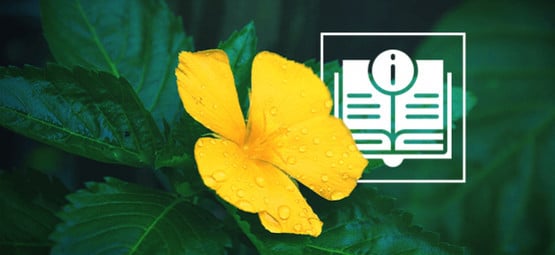
 5 min
3 June 2025
How to use damiana: Everything you need to know
What is damiana, and why are more people talking about it? Discover how this aromatic herb fits into traditional wellness systems and modern self-care. From preparation methods to safety tips, this gu ...
5 min
3 June 2025
How to use damiana: Everything you need to know
What is damiana, and why are more people talking about it? Discover how this aromatic herb fits into traditional wellness systems and modern self-care. From preparation methods to safety tips, this gu ...
-
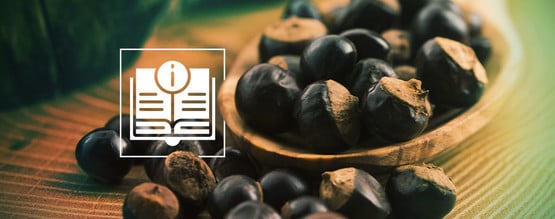
 5 min
21 February 2023
Everything You Need To Know About Guarana
Coffee is no longer the sovereign caffeine king. Though famed for its caffeine content and used by millions to wake up in the morning, there’s another berry that provides a more potent stimulating k ...
5 min
21 February 2023
Everything You Need To Know About Guarana
Coffee is no longer the sovereign caffeine king. Though famed for its caffeine content and used by millions to wake up in the morning, there’s another berry that provides a more potent stimulating k ...
-
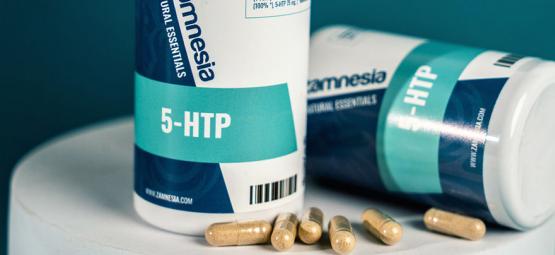
 4 min
3 November 2022
5-HTP: Everything You Need To Know
As a supplement, the use of 5-HTP has increased dramatically over the years. While the body naturally produces this chemical, many are looking to increase systemic levels in hopes of experiencing the ...
4 min
3 November 2022
5-HTP: Everything You Need To Know
As a supplement, the use of 5-HTP has increased dramatically over the years. While the body naturally produces this chemical, many are looking to increase systemic levels in hopes of experiencing the ...
-
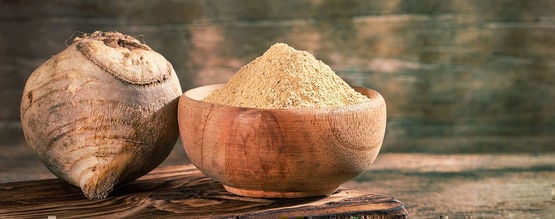
 4 min
29 September 2022
Everything You Need To Know About Maca Root
Heard about maca's unique potential to improve sex drive, energy level, and cognitive function? In this article, we take an in-depth look at Peruvian maca root, its rich cultural history, potential he ...
4 min
29 September 2022
Everything You Need To Know About Maca Root
Heard about maca's unique potential to improve sex drive, energy level, and cognitive function? In this article, we take an in-depth look at Peruvian maca root, its rich cultural history, potential he ...
Categories
-
Seedshop
- Feminized Cannabis Seeds
- Autoflower Seeds
- Regular Cannabis Seeds
- F1 Hybrids
- CBD Seeds
- Zamnesia Seeds
- Top 10 Autoflowering Seeds
- Top 10 Regular Seeds
- Top 10 USA Cannabis Strains
- Top 10 Feminized Seeds
- Beginner Strains
- Below 1% THC
- Classic Cannabis Strains
- Cup Winners
- F1 Hybrids
- Fast Flowering Seeds
- High CBD Strains
- High THC Strains
- Mix Packs
- Zamnesia Exclusive Collabs
- Amnesia Seeds
- Blueberry Seeds
- Cheese Seeds
- Diesel Seeds
- Gorilla Seeds
- Haze Seeds
- Kush Seeds
- Purple Seeds
- Skunk Seeds
- White Widow Seeds
- Northern Lights Seeds
- Granddaddy Purple Seeds
- OG Kush Seeds
- Blue Dream Seeds
- Lemon Haze Seeds
- Bruce Banner Seeds
- Gelato Seeds
- Sour Diesel Seeds
- Jack Herer Seeds
- Girl Scout Cookies Seeds (GSC)
- Wedding Cake Seeds
- Zkittlez Seeds
- Pineapple Express Seeds
- Chemdawg Seeds
- Hindu Kush Seeds
- Mimosa Seeds
- Zamnesia Seeds
- ACE Seeds
- Advanced Seeds
- Afghan Seed Connection
- Amsterdam Genetics
- Anesia Seeds
- Auto Seeds
- Barney's Farm
- Big Buddha Seeds
- Blimburn Seeds
- Bomb Seeds
- BSB Genetics
- BSF Seeds
- Buddha Seeds
- The Cali Connection Seeds
- CBD Seeds
- Compound Genetics
- Cookies Seed Bank
- Delicious Seeds
- DNA Genetics
- Doctor's Choice
- Dr. Underground
- Dutch Passion
- Elite Seeds
- Eva Seeds
- Exotic Seed
- Expert Seeds
- FastBuds
- Female Seeds
- French Touch Seeds
- Garden of Green
- GeneSeeds
- Genehtik Seeds
- G13 Labs
- Grass-O-Matic
- Greenhouse Seeds
- Growers Choice
- Humboldt Seed Company
- Humboldt Seed Organization
- Kalashnikov Seeds
- Kannabia
- The Kush Brothers
- Light Buds
- Little Chief Collabs
- Medical Seeds
- Ministry of Cannabis
- Mr. Nice
- Nirvana Seeds
- Original Sensible
- Paradise Seeds
- Perfect Tree
- Pheno Finder
- Philosopher Seeds
- Positronics Seeds
- Purple City Genetics
- Pyramid Seeds
- Rare Dankness
- Reggae Seeds
- Resin Seeds
- Ripper Seeds
- Royal Queen Seeds
- Sagarmatha Seeds
- Samsara Seeds
- Seedstockers
- Sensation Seeds
- Sensi Seeds
- Serious Seeds
- Silent Seeds
- Solfire Gardens
- Soma Seeds
- Spliff Seeds
- Strain Hunters
- Sumo Seeds
- Super Sativa Seed Club
- Super Strains
- Sweet Seeds
- TICAL
- T.H. Seeds
- Top Tao Seeds
- Vision Seeds
- VIP Seeds
- White Label
- World Of Seeds
- Seed Banks
-
Headshop
-
Vaporshop
-
Healthshop
-
Smartshop
- Top 10 Smartshop
- Kratom Dosage Calculator
- Zamnesia Gift Cards
- After Party
- Aphrodisiacs
- Aromatherapy
- Blue Lotus
- CBD Vape Juice
- Capsule Machines
- Crystals, Gemstones & Minerals
- Dream Herbs
- Drug Tests
- Extracts
- Happy Caps
- Herbal Tea
- Herbs & Seeds
- Incense
- Kanna
- Kratom
- LSA Seeds
- Mescaline Cacti
- Microdosing
- Nootropics
- Relaxing
- Salvia divinorum
- Smart Seeds
- Stimulants
- Supplements
- Tinctures
- Vape Herbs
-
Shroomshop
-
Growshop
- Top 10 Growshop
- Top 10 Plant Seeds
- All Seeds
- Cacti
- Chili & Pepper Seeds
- Companion Plants
- Edible Plant Seeds
- Exotic Seeds
- Flower Seeds
- Fruit Seeds
- Herb Seeds
- Interior Plant Seeds
- Microgreens
- Psychoactive Plant Seeds
- Sprouting
- Vegetable Seeds
- Wellness Plant Seeds
- After Harvest
- Climate Control
- Fertilizer
- Grow Tents
- Harvest, Dry & Cure
- LED Grow Lights
- Plant Seeds
- Propagation
-
Merchandise
-
Sale section
Categories
Discover
Help & Info
Tools
Our website won't work without these cookies activated. Therefore functional cookies can't be disabled.





